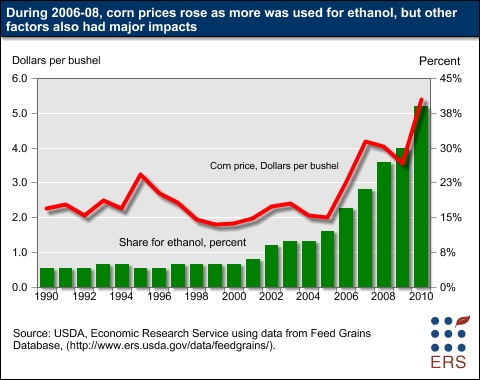Unless you’ve been living under a rock, you know how hot it is outside. This season isn’t like the summers of yesteryear either – temperatures across North America and Europe are reaching record highs. These record-breaking heat waves and insufficient rain has lead to drought conditions in many regions of the US, including the Corn Belt. 23 counties in Wisconsin have already been declared disaster areas. Large swaths of staple crops are unusable, including corn and soy beans. Lower crop yields mean higher food prices, obviously a bad thing for all of us.
So how do increasing food prices relate to alternative transportation fuels? Ethanol. As you probably know, the vast majority of ethanol in this country is derived from corn. Since the ethanol blender’s subsidy expired at the end of last year, the industry has taken quite the hit, and ethanol production has been down consistently while prices for ethanol blends have jumped. But really, corn prices have been high for a while, especially as the crop share used for ethanol production has increased. Check out the chart below:
The debate about whether diverting corn crops to make ethanol instead of animal feedstock (note that corn for ethanol and for human consumption are two different types) is a sustainable practice still rages on. But with ever-warmer seasons, especially summer and fall, is it really wise to rely on biofuels as an economical alternative fuel source? Probably not, especially since there are other fuel alternatives like propane autogas and natural gas that are already saving drivers money.




